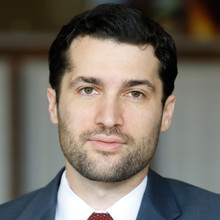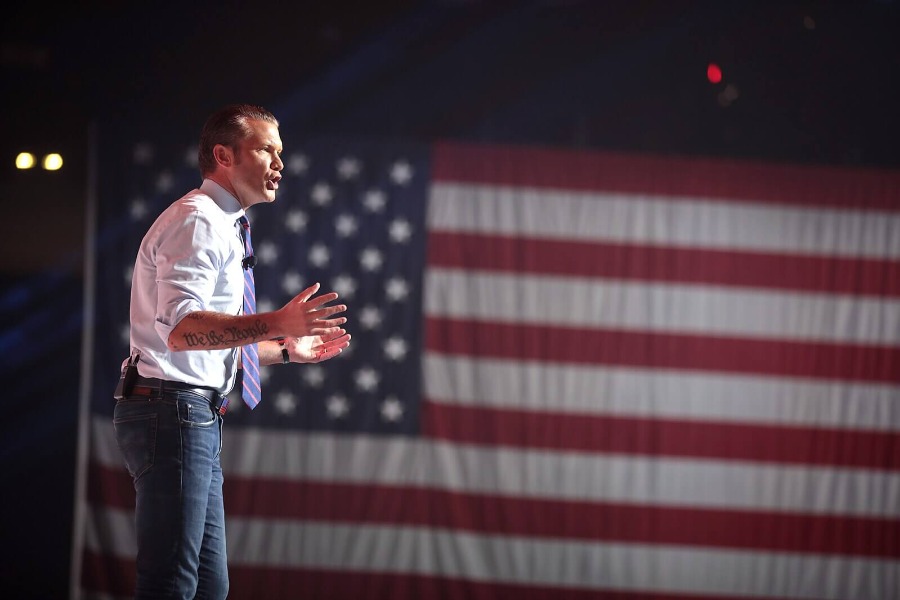What Andrew Cuomo’s Resignation Reveals About the State of American Democracy
Cuomo’s resignation says something important about the Democratic Party’s commitment to anti-authoritarianism.

Published by The Lawfare Institute
in Cooperation With

On the surface, the fall of Andrew Cuomo is a story about the continuing reverberations of the #MeToo movement, of a politician whose long history of sexual misconduct finally caught up with him. And this is certainly a big part of the story.
But Cuomo’s resignation—spurred by his complete abandonment by New York and national Democratic elites and the prospect of impeachment as well as civil and criminal liability—also says something important about the Democratic Party’s commitment to anti-authoritarianism.
Given Cuomo’s rapid and total fall into political disgrace, it might be hard to remember that, in the first half of 2020, he was arguably the most popular politician in the United States. Initially widely praised for his handling of the coronavirus pandemic, which hit New York hardest in the early months of the pandemic, Cuomo’s energetic engagement with New York’s coronavirus response—including his daily press conferences, for which he won an International Emmy—presented a stark contrast with President Trump, whose near-total lack of pandemic leadership Cuomo repeatedly and pointedly criticized. Cuomo enjoyed stratospheric approval ratings in the spring of 2020—there was even talk of him replacing Biden on the Democratic ticket—and, as late as August 2020, he topped a poll of Democratic voters for their pick for president in 2024 if President Biden didn’t run. And while Cuomo denied any presidential ambitions, such has been the case with many politicians who later enthusiastically ran for the nation’s highest office.
But with Cuomo’s resignation from the New York governorship, his political future looks bleak. He could, in theory, make a political comeback, but his hold over New York politics, and thus his springboard onto the national scene, is broken for the foreseeable future.
Cuomo’s rise and fall reflects both well and poorly on the Democratic Party. On the one hand, there’s the uncomfortable fact for Democrats—especially when Cuomo was the most popular Democratic politician in the country—that he shared many similarities with Donald Trump (a fact that I am hardly the first person to point out), and not just because they’re both baby boomers from Queens who made huge mistakes in handling the coronavirus pandemic. Here’s a non-exhaustive list of their shared character flaws, beyond the sexual misconduct that was the proximate cause of Cuomo’s resignation:
- Narcissism and indulging in cults of personality (see Cuomo’s reveling in last spring’s cringe-inducing “Cuomosexual” meme)
- Contempt for scientific expertise when it contradicted his own judgments
- Constant and extreme bullying
- Dishonesty and resort to coverups (as with Cuomo’s attempt to hide the number of nursing home deaths at the beginning of the pandemic)
- Willingness to undermine the rule of law (as with his complaint to the White House about former U.S. Attorney Preet Bharara, who was investigating corruption in New York) as well retaliation against those who would hold him accountable
- Toleration of corruption
- Obsession with media coverage to the exclusion of policy (As far back as the late 1990s, when Cuomo was President Bill Clinton’s secretary of housing and urban development, he described public relations as “the most important thing I do” and claimed that “eighty percent of this battle is communications.”)
- Use of the TV political-entertainment complex to counter more critical print reporting
- Authoritarianism and obsession with political control
What Cuomo’s long career in state and national politics—and in particular his extraordinary popularity last spring—indicates is that Democrats are not immune to the appeal of would-be strongmen, especially when they feel under threat, as they did from the twin dangers of Donald Trump and the coronavirus. Democrats have done better in controlling and suppressing their own would-be authoritarians—there is no comparison between Trump and the Democratic presidents who surround him. But the danger is there, and it will only increase with both political parties’ continued polarization—and thus perception of out-group threat—of American politics.
It’s also important to recognize that the background politics made it easier for party elites to get rid of Cuomo. New York is a deep blue state, and there is no concern that Cuomo’s resignation would empower a Republican to ascend to the top post in Albany. Compare this to the 2019 political crisis in Virginia, when Democrats backed the top three state officials, all of whom were dealing with potentially career-ending scandals—Lieutenant Governor Justin Fairfax in particular was twice accused of rape, conduct substantially more violent than anything Cuomo has been alledged to have done—in large part because the next official in the line of succession for the governorship was a Republican.
Democrats also want to emphasize their commitment to the #MeToo movement, for reasons both sincere and tactical, and Cuomo’s repeated acts of sexual misconduct present a more straightforward case than, for example, the conduct that led to Al Franken’s resignation from the Senate (and which many Democratic elites now regret). In addition, Cuomo’s replacement, Lieutenant Governor Kathy Hochul, is a well-regarded moderate who will become New York’s first female governor, which will constitute some small measure of poetic justice for Cuomo’s alleged misconduct. And Cuomo, already having alienated many of his natural allies in the state and national Democratic parties, was also fast losing popular support, with a large majority of New Yorkers in favor of his resignation. In other words, Democrats shouldn’t be too quick to write themselves a profile in courage.
But at the end of the day, the state and national Democratic parties were able to mobilize a united front against a powerful leader who, absent this pressure, could have clung to office and plausibly continued his political career. This is in sharp contrast to the Republican Party, which, while it has sometimes also been able to force out party elites accused of sexual misconduct, failed to mount a response when it counted most: standing up to Donald Trump before, during, and, in the aftermath of the Jan. 6 attack on the Capitol, after his scandal-ridden, norm-busting presidency. And it’s not just Trump, with his decades-long record of sexual misconduct—a record more serious than what Cuomo has been accused of and that Trump, with his infamous “grab 'em by the pussy” boast, all but admitted to—whom Republican elites repeatedly failed to confront. Party elites seem equally powerless in the face of far weaker, but equally extreme, Republican politicians, whether the likely-to-be-indicted Matt Gaetz or the QAnon-spouting Marjorie Taylor Greene.
What explains this difference? Why has the Republican Party devolved into a “cult” around extremism while the Democratic Party has largely avoided this fate? There’s no single factor. Internal party structure plays a role, as does the fact that the Democratic coalition, which has always been more diverse than the Republican one, naturally disperses power among more party elites. Unlike the Democratic Party, the GOP has largely abandoned a positive legislative agenda in favor of Trumpist obstructionism and white identity politics and so has nothing to fall back on if it repudiates its most popular standard bearer. And based on Trump’s continuing hold over the Republican base, it’s hard to avoid the conclusion that, at this point in American history, the centrist base of the Democratic Party simply cares more about norms of liberal democracy than does its more extreme Republican counterpart.
Cuomo’s fall is thus a positive sign that at least one of America’s major political parties is still willing to expel would-be authoritarians, norm violators and strongmen from its midst. But it’s sobering to reflect on how long Cuomo maintained his support, despite his manifest flaws, and that there’s no guarantee that the Democrats will avoid another Cuomo in the future. And, of course, a two-party system in which only one party cares about democratic norms is not one that can long survive.





